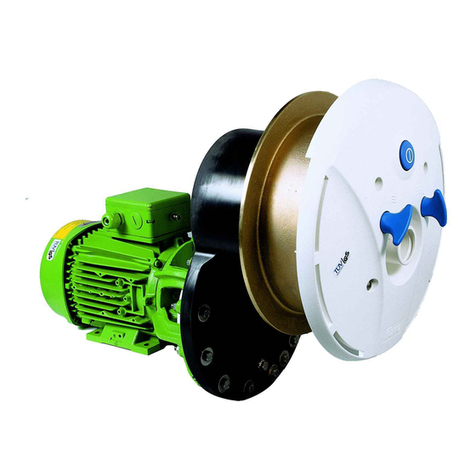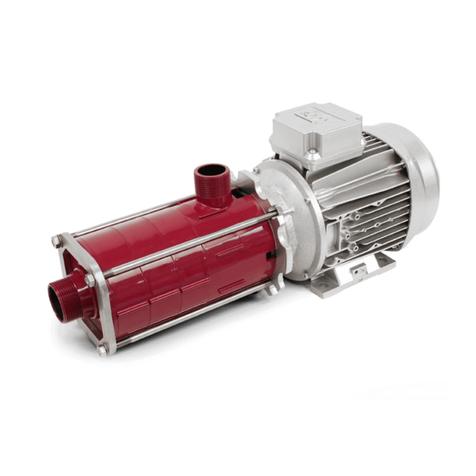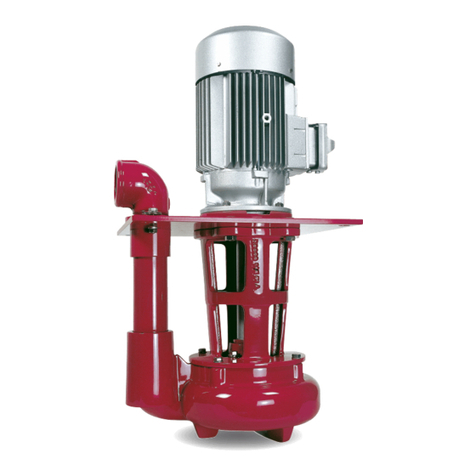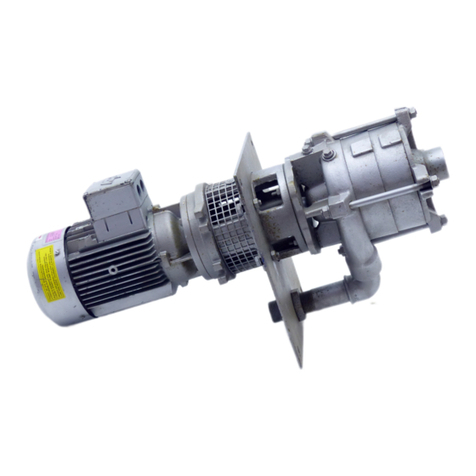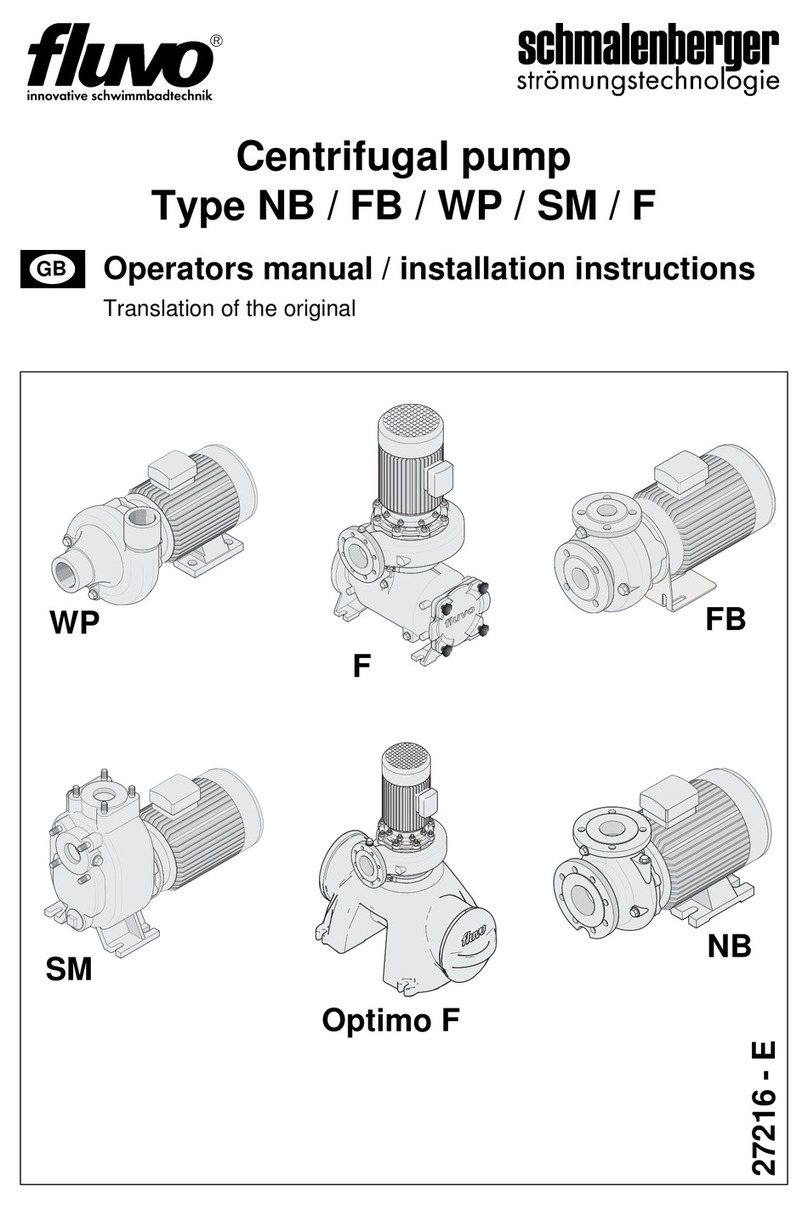
Schmalenberger GmbH + Co. KG
D-72072 Tübingen / Germany 9
Pump type S / SF
Version: 27229 - E
When installed on a foundation the centrifugal
pump must be set up with the aid of a spirit level.
2.3.4 Connecting the pipework
Note the denomination on the housing:
S = suction connection, D = pressure
connection
The pipes must be supported as close as
possible to the centrifugal pump and connected
to it free of all tension. Their weight must not be
supported by the pump.
The positioning must be undertaken with the
greatest care as this is the prerequisite for
trouble-free operation of the plant.
If these instructions are not observed,
then any claims under guarantee will be
void.
• If the pipe strength is exceeded leaks can
occur in the pump or in the flange
connections, for example, that could result in
vast amounts of medium being expelled.
• In the case of short pipes the nominal bore
should be at least the same as the
centrifugal pump connections. For long
pipes the most economic nominal bore
should be determined on a case by case
basis.
• Connection pieces to larger nominal bores
should be carried out with approx. 8°
expansion angle to avoid significant loss of
pressure.
• In order to prevent the formation of air
pockets, the suction pipe to the centrifugal
pump must be installed to rise continuously,
on the pressure side it must fall continuously.
Depending on the type of system and
centrifugal pump being used, it is
recommended that backflow prevention and
shut-off devices are installed.
• Often welding beads, scales and other
impurities do not get dislodged for some
period of time. They should be kept clear of
the pump by inserting a sieve in the suction
pipe.
• The free cross-section of the sieve must be
3 times the cross-section of the pipe so that
there is not too large a resistance built up
due to foreign bodies that flow in.
Hat-shaped sieves containing a mesh wire net
having a mesh size of 2.0 mm and
0.5 mm wire diameter made of corrosion
resistant material have proved useful in practice.
2.3.5 Electrical connections
The electrical connections to the pump must be
carried out by a specialised company in the
electrical engineering branch approved by the
local energy provider, taking into account the
technical connection requirements.
Positioning them with the
motor hanging downwards is
not permitted.
Warning!
Under no circumstances must
the pump be used as anchor
point for the pipework. No
forces or moments (e.g. due to
twisting or heat expansion)
from the pipework must act on
the pump.
Important
Pipe compensators must not be
used to make up for inaccuracies in
the pipelines, for example with a
centre offset of the flange.
Warning!
In the case of hot, caustic or
poisonous delivery media!
Warning! Mortal danger!
Taps that close very suddenly
(abruptly) must be avoided in the
pipework. The resulting pressure
surges can greatly exceed the
maximum permitted housing
pressure of the pump!
To prevent too strong pressure
surges dampers or blast tanks
should be installed.
Note:
At the end of installation, before
starting up the system the tanks,
pipes and connections must be
thoroughly cleaned, rinsed and
blown through.
